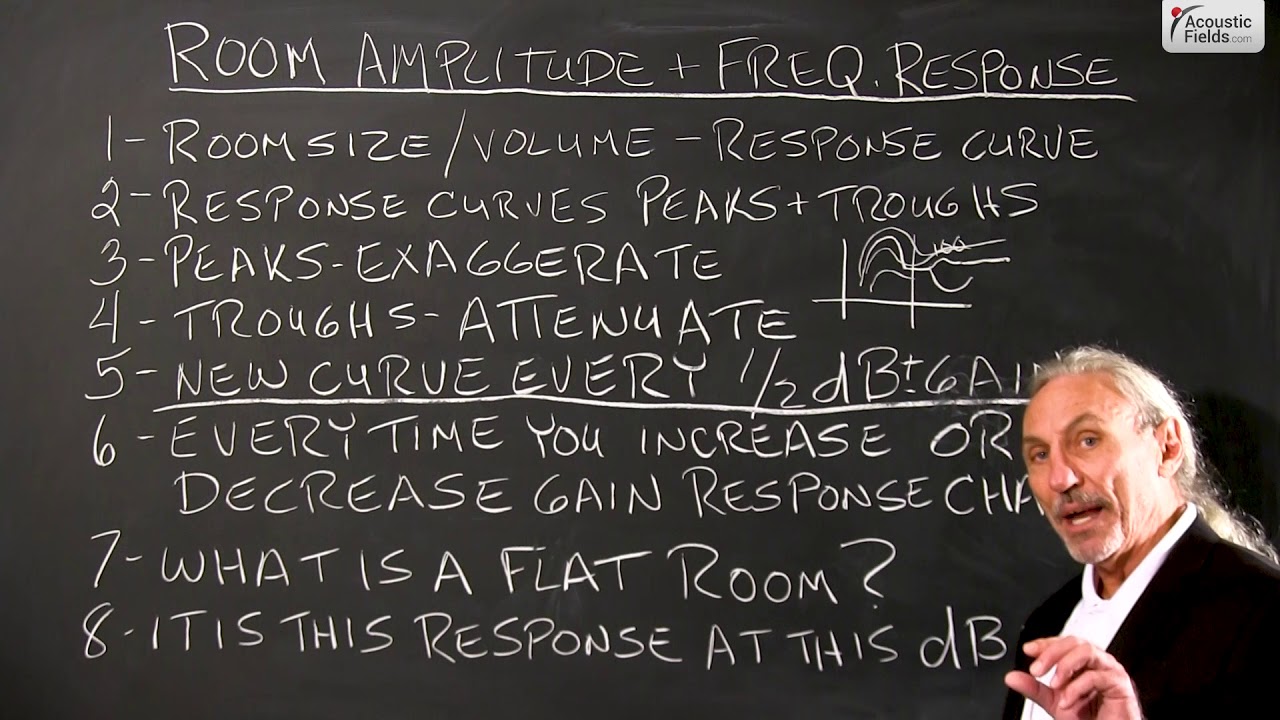Let’s talk about room amplitude and frequency response. I get a lot of people that call in and send their measurements of their room and I have to remind them that there are certain qualifications to those measurements and we need to understand what really a flat response in a room is all about.
So we know from past videos that room size and volume dictates the response curve. And we know that in small rooms we always have that big bump below 100 cycles. So that’s always a problem in small rooms. So we know that these bumps and peaks are directly related to the size of the room and the volume and also the usage, okay? Because what we do and how much energy we put in the room determines how the room reacts to that energy.
So we know that we have peaks and troughs and we know from past videos that our peaks can exaggerate certain frequencies and certain sounds. And we know that the troughs can attenuate or completely eliminate. I always tell people, I mean you can EQ a trough in a frequency response curve and blow up your equalizer because the room is simply not going to let you work with it in that way. And I know that’s hard to understand but that’s really how it is.
So what do we get? We get a relationship where we get a new curve. Good or better or worse so to speak with every half dB increase in our gain. So when we reach for that gain knob, if the top one was our original curve that we measured before and we reach for that gain knob and we push that gain knob up a half a dB, that curve is going to change. That’s how sensitive room response is.
So every time you increase or decrease the gain, you’re changing the response curve of the room. So what is a flat room? Well, it’s that response at that pressure level. So it’s whatever the pressure level in the room is that you’ve created with that gain. That’s going to be your response. So we like to try to work with our response curves in our room between 82-85 dB SPL and that gives us plenty of headroom and energy to go from there.
So I hope that helps. Just realize that the frequency response of your room is directly dependent on gain.
—
This is an unedited transcript from our video series from Acoustic Fields. There will be some errors in grammar and sentence structure that occur during this translation process.
For complete understanding and comprehension, please view the video which is included in this text. For any additional information regarding this topic or others relating to room acoustics, please contact us directly at:
P: 520 – 392 – 9486







